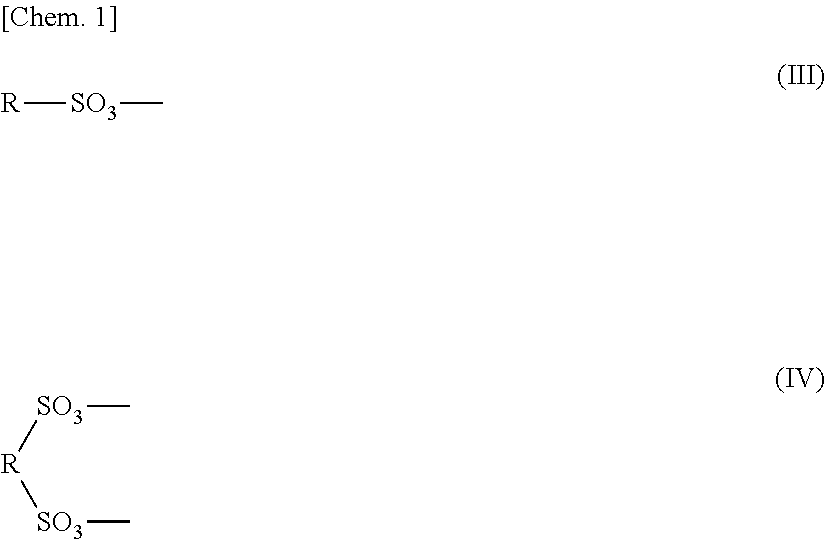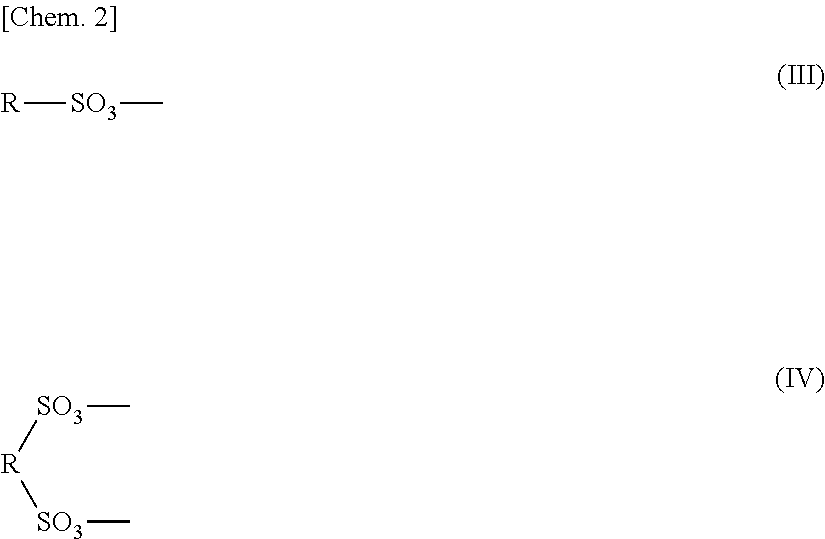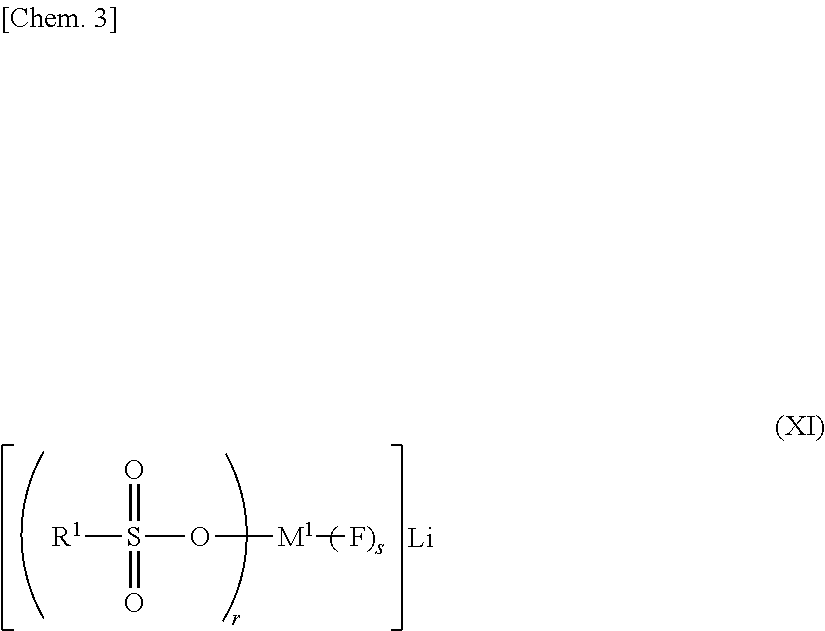Non-aqueous electrolyte and power storage device using same
a power storage device and non-aqueous electrolyte technology, which is applied in the direction of electrochemical generators, cell components, transportation and packaging, etc., can solve the problems of battery capacity and battery performance, such as cycle properties, that the battery performance of the battery may be largely worsened on use in a broad temperature range, and achieve the effect of improving the electrochemical characteristics of the energy storage device and low-temperature discharging characteristics
- Summary
- Abstract
- Description
- Claims
- Application Information
AI Technical Summary
Benefits of technology
Problems solved by technology
Method used
Image
Examples
examples
[0209]Examples of an electrolytic solution using the lithium salt of the present invention and Synthesis Examples of a compound are hereunder described, but it should not be construed that the present invention is limited to these Examples and Synthesis Examples.
[0210]A. Next, results of addition of the lithium salt represented by the general formula (XI-1) or (XIII-1) are described in detail by reference to the Examples.
examples a-1 to a-34
and Comparative Example A-1
Production of Lithium Ion Secondary Battery
[0211]94% by mass of LiNi1 / 3Mn1 / 3CO1 / 3O2 (positive electrode active material; a supernatant at the time of dispersing 10 g of the positive electrode active material in 100 mL of distilled water had a pH of 10.8) and 3% by mass of acetylene black (electroconductive agent) were mixed and then added to and mixed with a solution which had been prepared by dissolving 3% by mass of polyvinylidene fluoride (binder) in 1-methyl-2-pyrrolidone in advance, thereby preparing a positive electrode mixture paste. This positive electrode mixture paste was applied onto one surface of an aluminum foil (collector), dried, and treated under pressure, followed by punching out in a prescribed size, thereby fabricating a positive electrode sheet. A density of a portion of the positive electrode except for the collector was 3.6 g / cm3.
[0212]In addition, 95% by mass of artificial graphite (d002=0.335 nm, negative electrode active material)...
examples a-35 to a-36
and Comparative Example A-2
[0225]A negative electrode sheet was fabricated by using silicon (elemental substance) (negative electrode active material) in place of the negative electrode active material used in Example A-1. 80% by mass of silicon (elemental substance) and 15% by mass of acetylene black (electroconductive agent) were mixed and then added to and mixed with a solution which had been prepared by dissolving 5% by mass of polyvinylidene fluoride (binder) in 1-methyl-2-pyrrolidone in advance, thereby preparing a negative electrode mixture paste. A coin-type battery was fabricated in the same manner as that in Example A-1, except that this negative electrode mixture paste was applied onto a copper foil (collector), dried, and treated under pressure, followed by punching out in a prescribed size, thereby fabricating a negative electrode sheet, and that the composition of the nonaqueous electrolytic solution was changed to a prescribed composition, and the battery was evaluate...
PUM
| Property | Measurement | Unit |
|---|---|---|
| temperature | aaaaa | aaaaa |
| temperature | aaaaa | aaaaa |
| density | aaaaa | aaaaa |
Abstract
Description
Claims
Application Information
 Login to View More
Login to View More - R&D
- Intellectual Property
- Life Sciences
- Materials
- Tech Scout
- Unparalleled Data Quality
- Higher Quality Content
- 60% Fewer Hallucinations
Browse by: Latest US Patents, China's latest patents, Technical Efficacy Thesaurus, Application Domain, Technology Topic, Popular Technical Reports.
© 2025 PatSnap. All rights reserved.Legal|Privacy policy|Modern Slavery Act Transparency Statement|Sitemap|About US| Contact US: help@patsnap.com



